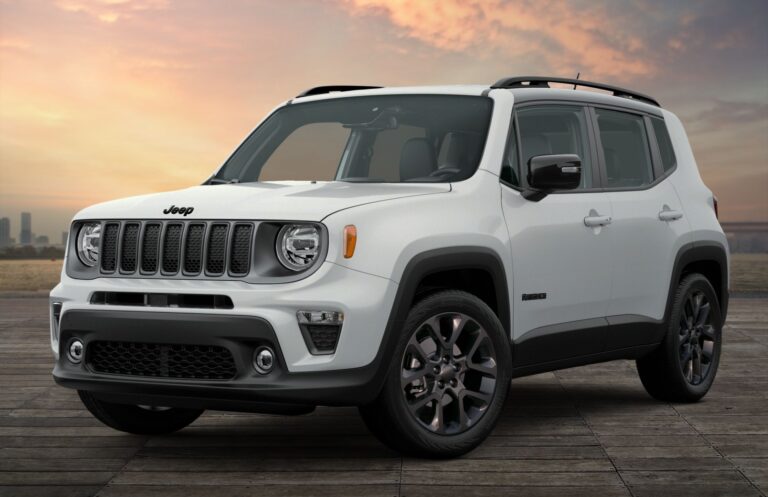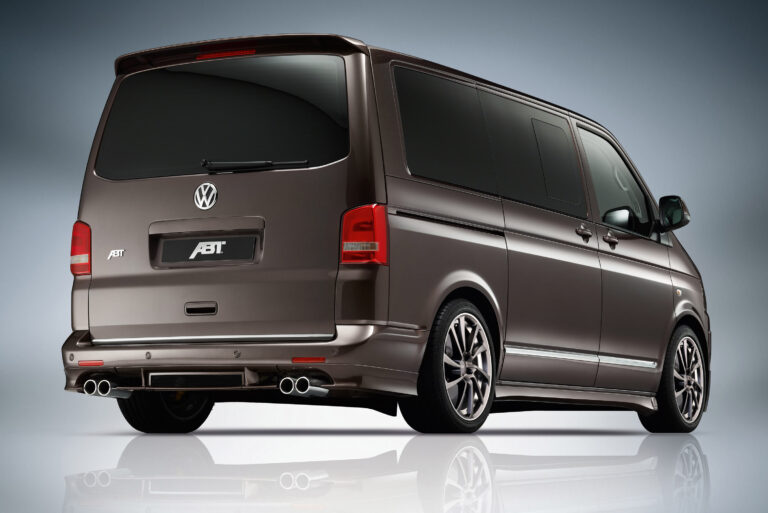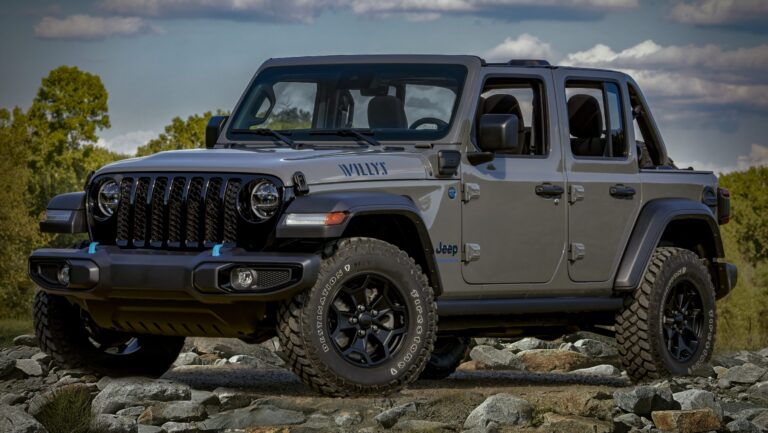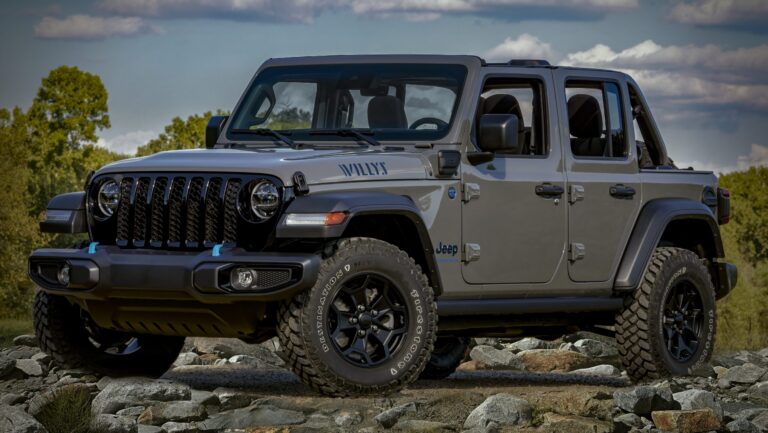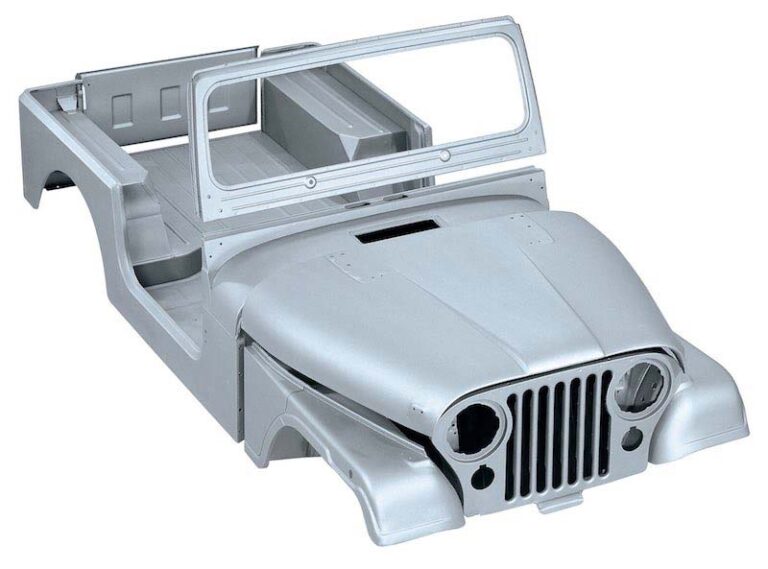1997 Jeep Grand Cherokee Engine For Sale: A Comprehensive Guide to Revitalizing Your ZJ
1997 Jeep Grand Cherokee Engine For Sale: A Comprehensive Guide to Revitalizing Your ZJ jeeps.truckstrend.com
The 1997 Jeep Grand Cherokee, affectionately known by its chassis code "ZJ," holds a special place in the hearts of off-road enthusiasts and SUV lovers alike. Renowned for its robust capabilities, comfortable interior for its era, and iconic styling, many ZJ owners find themselves at a crossroads when their original engine finally gives up the ghost. Rather than send these beloved vehicles to the junkyard, a growing number are opting for engine replacement. This comprehensive guide delves into everything you need to know about finding and purchasing a 1997 Jeep Grand Cherokee engine for sale, helping you breathe new life into your cherished ZJ.
Why Consider a Replacement Engine for Your 1997 ZJ?
1997 Jeep Grand Cherokee Engine For Sale: A Comprehensive Guide to Revitalizing Your ZJ
While the 1997 Grand Cherokee is known for its durability, engines, like all mechanical components, have a finite lifespan. After decades of service and potentially hundreds of thousands of miles, various issues can necessitate a replacement. Common reasons include:
- High Mileage Wear: Piston ring wear, bearing failure, and camshaft lobe wear are common in high-mileage engines, leading to excessive oil consumption, low compression, and reduced power.
- Overheating Damage: Sustained overheating can warp cylinder heads, crack engine blocks, or damage head gaskets, often resulting in coolant mixing with oil or vice versa.
- Specific Engine Weaknesses:
- 4.0L I6 (Cherokee/Grand Cherokee): While legendary for reliability, the 4.0L can suffer from "0331" cylinder head cracks (post-2000 models primarily, but older heads can crack from overheating), cracked exhaust manifolds, and occasional lifter noise.
- 5.2L V8 (318 Magnum): Known for its robust bottom end, issues often include plenum gasket leaks (leading to oil consumption and misfires), distributor shaft wear, and occasional valve guide wear.
- 5.9L V8 (360 Magnum): Found only in the limited 5.9L Limited model, these engines share similar plenum gasket issues with the 5.2L and can also suffer from oil pressure problems if not maintained, or general wear from being a higher-performance variant.

- Catastrophic Failure: Rod knock, thrown rods, or severe internal damage from lack of oil changes or sudden component failure can render an engine irreparable.
For many owners, the cost of a replacement engine, even with installation, is significantly less than purchasing a new or late-model used vehicle, making it a cost-effective solution to keep their reliable ZJ on the road.

Engine Options for the 1997 Grand Cherokee
The 1997 Jeep Grand Cherokee offered a choice of three distinct engines, each with its own characteristics and considerations for replacement:
- 4.0L I6 (Inline-Six): This 4.0-liter straight-six engine (AMC 242) is arguably the most common and widely praised for its simplicity, torque, and legendary durability. It produces around 185 horsepower and 220 lb-ft of torque. When seeking a replacement, this is often the easiest to find due to its widespread use across various Jeep models (Cherokee XJ, Wrangler TJ/YJ, Grand Cherokee ZJ).
- 5.2L V8 (318 Magnum): A 5.2-liter (318 cubic inch) V8 engine from Chrysler’s Magnum series, offering increased power (approximately 220 horsepower, 295 lb-ft of torque) and smoother operation than the I6. This is a popular choice for those seeking more towing capacity or better acceleration.
- 5.9L V8 (360 Magnum): Exclusively found in the limited-production 1998 Grand Cherokee 5.9L Limited (though some late 1997 production models might have seen them, generally considered a ’98 engine), this 5.9-liter (360 cubic inch) V8 was the most powerful option, producing 245 horsepower and 345 lb-ft of torque. It’s a highly sought-after engine, making replacements rarer and often more expensive. Note: While generally considered a ’98 engine, it’s worth mentioning if someone mistakenly believes their ’97 has one or wants to swap. For a pure ’97, the 5.2L is the top V8.

Important Compatibility Note: Swapping between the I6 and V8 engines is a complex undertaking, requiring not just the engine but also the correct transmission, engine computer (ECU), wiring harness, motor mounts, and potentially other components. It is generally recommended to replace your engine with the same type that originally came in your vehicle unless you are undertaking a dedicated and well-researched conversion project.
Types of Replacement Engines Available
When searching for a 1997 Jeep Grand Cherokee engine, you’ll encounter different categories of availability, each with its own pros and cons:
- Used Engines (Salvage/Junk Yards):
- Pros: Most affordable option. Readily available from various sources.
- Cons: Unknown history, mileage, and internal condition. No warranty or very limited (e.g., 30 days). Risk of receiving a "lemon." Requires thorough inspection if possible.
- Remanufactured/Rebuilt Engines:
- Pros: The best balance of cost and reliability. These engines have been disassembled, inspected, cleaned, and had worn or damaged components replaced with new or reconditioned parts (e.g., new pistons, rings, bearings, camshafts, valvetrain components). They are typically tested and come with a substantial warranty (e.g., 1-3 years, unlimited mileage).
- Cons: More expensive than used engines. Requires a "core" return (your old engine) or a core charge.
- New Crate Engines:
- Pros: Brand new, zero miles, full factory warranty.
- Cons: Extremely rare for a 1997 vehicle, and if available, prohibitively expensive, often costing more than the vehicle’s entire value. For most practical purposes, a high-quality remanufactured engine is the closest you’ll get to "new."
Where to Find a 1997 Jeep Grand Cherokee Engine
Finding a suitable replacement engine requires knowing where to look:
- Specialized Engine Suppliers: Companies like Jasper Engines & Transmissions, ATK Engines, Fraser Engines, and many regional engine rebuilders specialize in remanufactured engines and often carry a wide range for popular vehicles like the ZJ. They offer warranties and support.
- Online Marketplaces & Directories:
- eBay Motors: A vast selection of used and remanufactured engines from various sellers, often with shipping options.
- LKQ (Used Parts Locator): One of the largest salvage companies, LKQ allows you to search their inventory across numerous yards.
- Car-Part.com: A powerful search engine that connects you to thousands of salvage yards across North America. You can specify year, make, model, and engine type.
- Facebook Marketplace/Groups: Local listings from private sellers or smaller shops. Be cautious and verify seller credibility.
- Local Salvage Yards/Auto Recyclers: Visiting local yards allows for physical inspection of the engine (if it’s still in the donor vehicle) and potentially better pricing for cash-and-carry deals.
- Jeep Forums & Enthusiast Groups: Online communities can be a great resource for leads, advice, and sometimes even engines for sale from other enthusiasts.
Key Considerations Before Buying
Purchasing an engine is a significant investment. Thorough due diligence is crucial:
- Engine Type and Code Verification: Always confirm the exact engine code (e.g., 4.0L, 5.2L) and ensure it matches your vehicle’s original engine or your intended swap. Provide your VIN to the seller if possible to ensure compatibility.
- Condition and History (for Used Engines):
- Mileage: Lower mileage is generally better, but not always indicative of condition.
- Donor Vehicle Info: Ask for the VIN of the donor vehicle. This can sometimes provide a CarFax report for collision history or reported mileage.
- Running Condition: Was the engine tested before removal? Did it have good compression? Was there any smoke, knocking, or unusual noises? Get documentation if possible.
- Visual Inspection: Look for signs of severe oil leaks, rust, cracked components, or impact damage. Check the oil filler cap for "sludge" indicating poor maintenance.
- Warranty (Crucial for Remanufactured/Rebuilt): Understand the terms: duration, mileage limits, what’s covered (parts, labor), and the core return policy. A strong warranty provides peace of mind.
- Core Charge: Remanufactured engines typically require a "core" (your old engine) to be returned. If you don’t return one, or if yours is severely damaged, you’ll pay a core charge, which can be hundreds of dollars.
- Shipping Costs: Engines are heavy! Factor in freight shipping costs, which can add hundreds of dollars, especially for cross-country shipments.
- What’s Included: Clarify what comes with the engine (e.g., intake manifold, exhaust manifold, sensors, throttle body, distributor, accessories like alternator/power steering pump). Often, "long block" means just the main engine assembly without accessories.
- Installation Method: Will you DIY or hire a professional? Factor in labor costs if hiring a shop.
The Buying Process: A Step-by-Step Guide
- Diagnose Thoroughly: Before buying, confirm your current engine is truly the problem. Rule out simple fixes like sensors, wiring, or fuel delivery issues.
- Determine Your Budget: Decide how much you’re willing to spend on the engine itself, shipping, and installation.
- Research Engine Options: Based on your budget and desired reliability, choose between used, rebuilt, or remanufactured.
- Identify Reputable Sellers: Check reviews, BBB ratings, and industry affiliations for engine suppliers. For private sellers or salvage yards, ask for references or inspect in person.
- Ask Detailed Questions: Don’t be afraid to ask about mileage, history, testing, warranty, core policy, and what’s included. Get answers in writing if possible.
- Request Photos/Videos: If you can’t inspect in person, ask for high-resolution photos and videos (e.g., showing compression test results or the engine running if still in the donor vehicle).
- Understand Warranty Terms: Read the fine print of any warranty offered.
- Arrange Shipping/Pickup: Confirm shipping costs, delivery timeframe, and whether a liftgate service is needed for delivery to a residential address.
- Plan for Installation: Schedule with your mechanic or prepare your garage for the swap.
Installation Challenges and Tips
Engine replacement is a complex task. Here are some tips:
- Professional Installation Recommended: Unless you have significant automotive experience, proper tools (engine hoist, transmission jack), and a well-equipped workspace, professional installation is advisable.
- Replace Peripherals: While the engine is out, it’s the ideal time to replace wear items like:
- Motor mounts and transmission mount
- Water pump, thermostat, hoses, and serpentine belt
- Spark plugs, wires, distributor cap, rotor (if applicable)
- Any accessible sensors (crankshaft position sensor, camshaft position sensor, oxygen sensors)
- Fuel filter
- If automatic, consider replacing the transmission fluid and filter.
- Break-in Procedure (for Remanufactured): Follow the manufacturer’s recommended break-in procedure carefully. This often involves specific oil changes and avoiding heavy loads for the initial miles to ensure proper ring seating.
- Fluid Changes: Fill with fresh engine oil, coolant, and power steering fluid.
Estimated Price Guide for 1997 Jeep Grand Cherokee Engines
Prices for a 1997 Jeep Grand Cherokee engine can vary significantly based on condition, type, mileage (for used), and supplier. The table below provides general estimated ranges. These do NOT include shipping, core charges, or installation.
| Engine Type | Condition | Estimated Price Range (USD) | Key Factors Affecting Price |
|---|---|---|---|
| 4.0L I6 | Used (Salvage) | $600 – $1,200 | Mileage, reported condition, warranty (if any), local vs. shipped |
| 4.0L I6 | Remanufactured | $1,800 – $3,000 | Warranty length, supplier reputation, what’s included (long block vs. complete) |
| 5.2L V8 | Used (Salvage) | $800 – $1,500 | Mileage, reported condition, warranty (if any) |
| 5.2L V8 | Remanufactured | $2,200 – $3,500 | Warranty length, supplier reputation, what’s included |
| 5.9L V8 | Used (Salvage) | $1,200 – $2,500+ | Rarity, mileage, demand, reported condition |
| 5.9L V8 | Remanufactured | $3,000 – $5,000+ | Rarity, supplier, warranty length, demand |
Note on Installation Costs: Professional installation of a replacement engine typically ranges from $1,000 to $2,500, depending on the shop’s labor rate, location, and the complexity of the swap (V8s are often slightly more labor-intensive than I6s).
Conclusion
Finding a 1997 Jeep Grand Cherokee engine for sale is a viable and often economical path to extending the life of your cherished ZJ. Whether you opt for a budget-friendly used engine or invest in a reliable remanufactured unit, careful research, understanding the different engine types, and thorough vetting of sellers are paramount. By following the advice in this guide, you can confidently navigate the market, secure the right engine, and soon be back on the road, or off it, enjoying the legendary capabilities of your revitalized 1997 Jeep Grand Cherokee.
Frequently Asked Questions (FAQ)
Q1: How long do replacement engines for a 1997 Grand Cherokee typically last?
A1: A properly installed remanufactured engine can last as long as, or even longer than, the original engine – often 100,000 to 200,000+ miles with proper maintenance. Used engines’ lifespans are highly variable and depend entirely on their prior history and mileage.
Q2: Is it worth replacing the engine in a 1997 ZJ?
A2: For many, yes. If the rest of the vehicle (transmission, frame, body, interior) is in good condition, replacing the engine is usually far cheaper than buying a comparable used vehicle. It allows you to keep a vehicle you know and love, avoiding the unknown history of a new purchase.
Q3: What’s the difference between a rebuilt and a remanufactured engine?
A3: While often used interchangeably, "remanufactured" generally implies a more comprehensive process. A remanufactured engine is disassembled, inspected, machined to factory specifications, and has all wear parts replaced (e.g., new pistons, rings, bearings, camshafts). A "rebuilt" engine might only address specific issues or replace components that are obviously worn, potentially leaving some original parts that are still within tolerance but have significant wear. Remanufactured engines typically come with better warranties.
Q4: Can I upgrade my 4.0L I6 to a V8 (5.2L or 5.9L)?
A4: Yes, it’s technically possible, but it’s a significant undertaking. It requires not just the engine but also the correct transmission, engine computer (ECU), wiring harness, motor mounts, radiator, exhaust, and potentially other components. It’s a complex and costly swap, generally recommended only for experienced mechanics or dedicated enthusiasts.
Q5: What should I specifically look for when buying a used engine?
A5: Ask for proof it ran well before removal (video, compression test results). Check for excessive sludge under the oil cap, which indicates poor maintenance. Look for signs of major leaks or external damage. Get the donor vehicle’s VIN if possible. A reputable seller will provide this information.
Q6: What’s the average cost of installation for a 1997 Jeep Grand Cherokee engine?
A6: Professional installation typically ranges from $1,000 to $2,500. This cost varies based on the shop’s labor rate, the complexity of the specific engine swap (V8s often slightly more labor-intensive), and whether additional components (like motor mounts or hoses) are replaced during the process.


